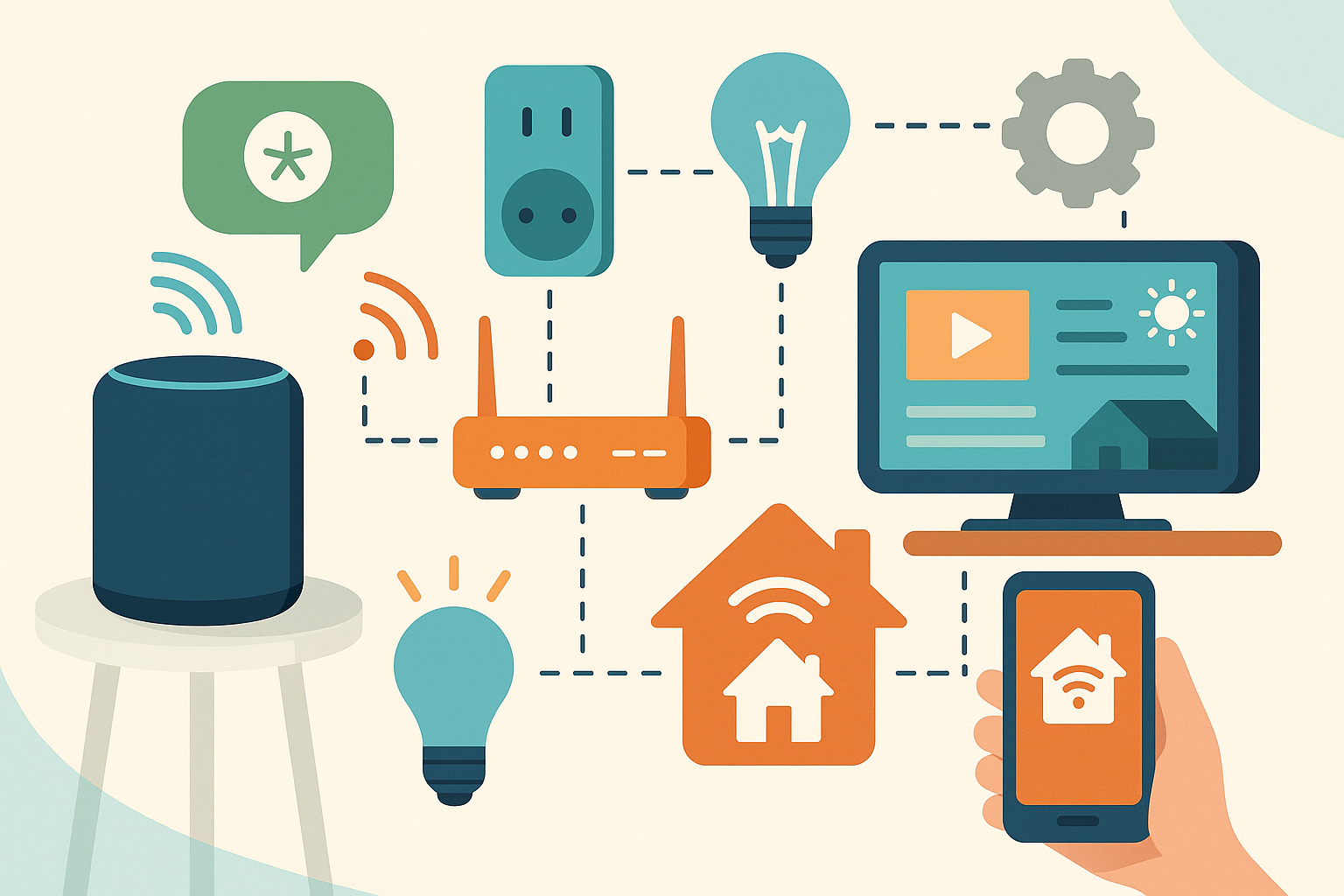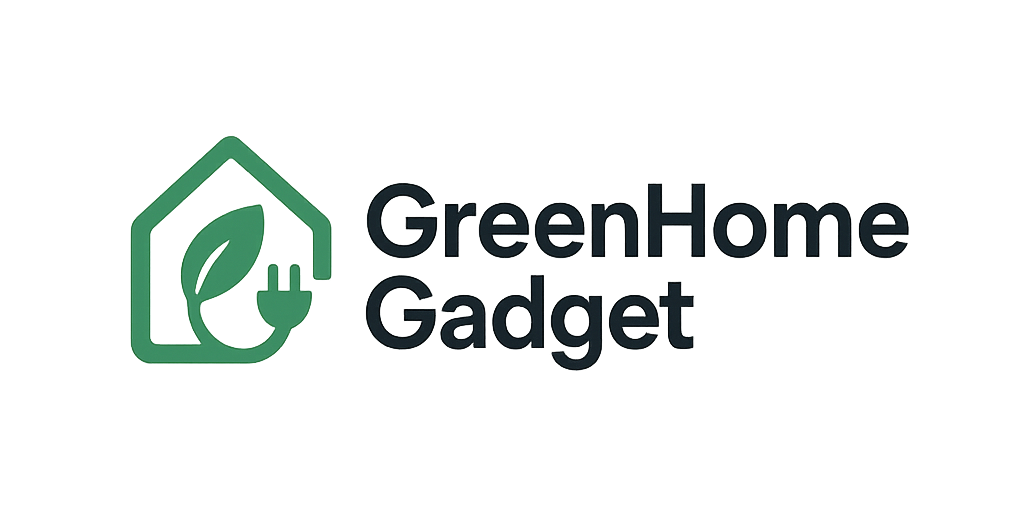
Disclosure: This guide contains affiliate links. We may earn a commission if you make a purchase through these links—at no extra cost to you.
Published: 25 May 2025
Take Your Smart Home to the Next Level
Welcome to the final chapter in our Smart Home 2025 guide series. In Part 1 we built the foundation, and in Part 2 we explored room-by-room upgrades. Now it’s time to tie it all together with automations, multi-device integration, and tips to keep your smart home future-ready.
This part is all about creating a home that works *for you* — intuitively, intelligently, and effortlessly.
🔁 Build Powerful Automations
- 🕔 Time-Based: Turn off lights at midnight, start the kettle at 7am, or dim bulbs at sunset
- 📍 Location-Based: Set “Arrive Home” routines to trigger lights and heating as you enter
- 🎤 Voice-Triggered: Use Alexa/Google phrases like “Movie Time” or “Bedtime” for grouped actions
- ⚡ Sensor-Based: Motion or temperature sensors activate lights, fans, or dehumidifiers
💡 Tip: Start with one or two routines and expand as your needs grow. Focus on real-life convenience, not gimmicks.
🔗 Get Devices Talking to Each Other
One app is good. One smart ecosystem is better. But true power lies in connecting different types of devices into coordinated workflows.
- Smart Plugs + Voice Assistant = “Goodnight” command powers down everything
- Smart Bulb + Motion Sensor = Hallway light turns on at night only
- Smart Lock + Video Doorbell = Get visual and access alerts instantly
- Smart Thermostat + Presence Detection = Pause heating when no one is home
💡 Tip: Use Alexa or Google routines to group devices into scenes. You can mix lights, plugs, thermostats, and more — even across brands if Matter-compatible.
🧩 Embrace Matter & Thread for Future-Proofing
Matter is the new smart home standard making cross-brand compatibility easier than ever — and it’s supported by Apple, Amazon, Google, and Samsung.
- 🔗 Matter: Look for this label when buying new plugs, bulbs, thermostats, or locks
- 🕸️ Thread: Low-power mesh network that boosts performance and reliability (great for battery-powered devices)
- 🧠 Hubs: Use Matter-ready hubs like the Aeotec Smart Home Hub – Z-Wave & Zigbee Automation or Echo (Newest Gen) – Matter-Compatible Hub
☁️ Understand Cloud vs Local Control
Not all smart homes need the cloud. In fact, local control is faster and more private.
- ☁️ Cloud-based devices (e.g. Ring, Google Nest) require internet to function
- 🏠 Local control (e.g. Eve Energy Plug – Matter + Local Control) works even when the internet goes down
💡 Tip: If privacy is a concern or your Wi-Fi is spotty, prioritise devices with local fallback.
🔧 Maintain & Scale Over Time
- 📱 Regularly update apps and firmware for better performance and security
- 📶 Revisit your Wi-Fi setup as you add more devices — mesh systems help
- 💡 Replace older, cloud-dependent tech with Matter-supported options when upgrading
- 📊 Use energy monitoring plugs and thermostats to track usage over time
✅ Final Thoughts & Summary
- 🔁 Automate tasks based on time, presence, and voice
- 🔗 Group and sync your devices through one platform
- 🧩 Choose Matter-compatible gear for easier upgrades
- ☁️ Understand local vs cloud control — and mix both as needed
Your smart home doesn’t need to be massive or complex — just thoughtful and useful. By building solid automations, investing in future-proof devices, and avoiding ecosystem overload, your home will serve you well for years to come.
Start your Smart Home Journey from the Beginning
Missed the earlier parts? Read Part 1: Essentials and Part 2: Room-by-Room Recommendations
